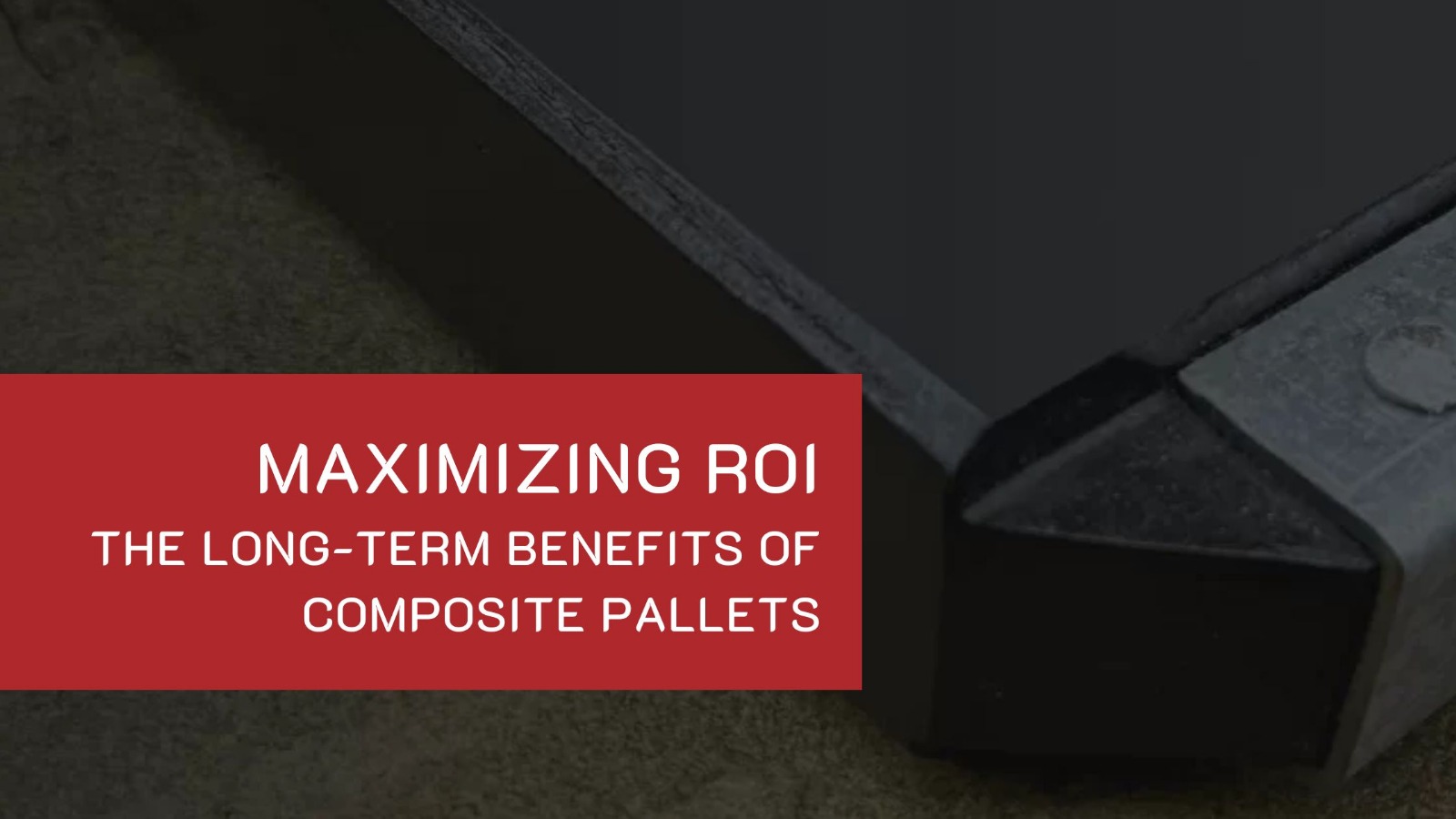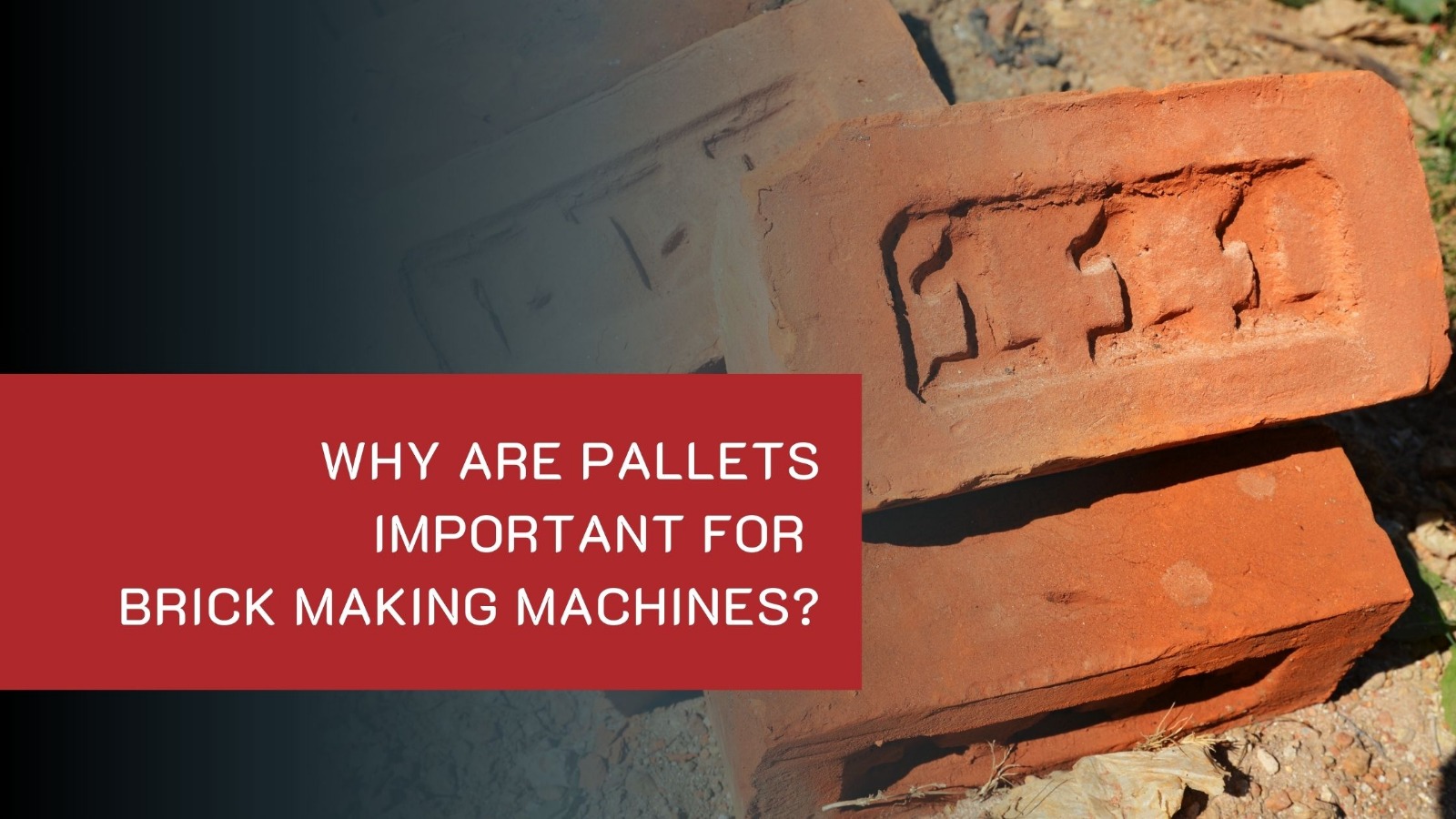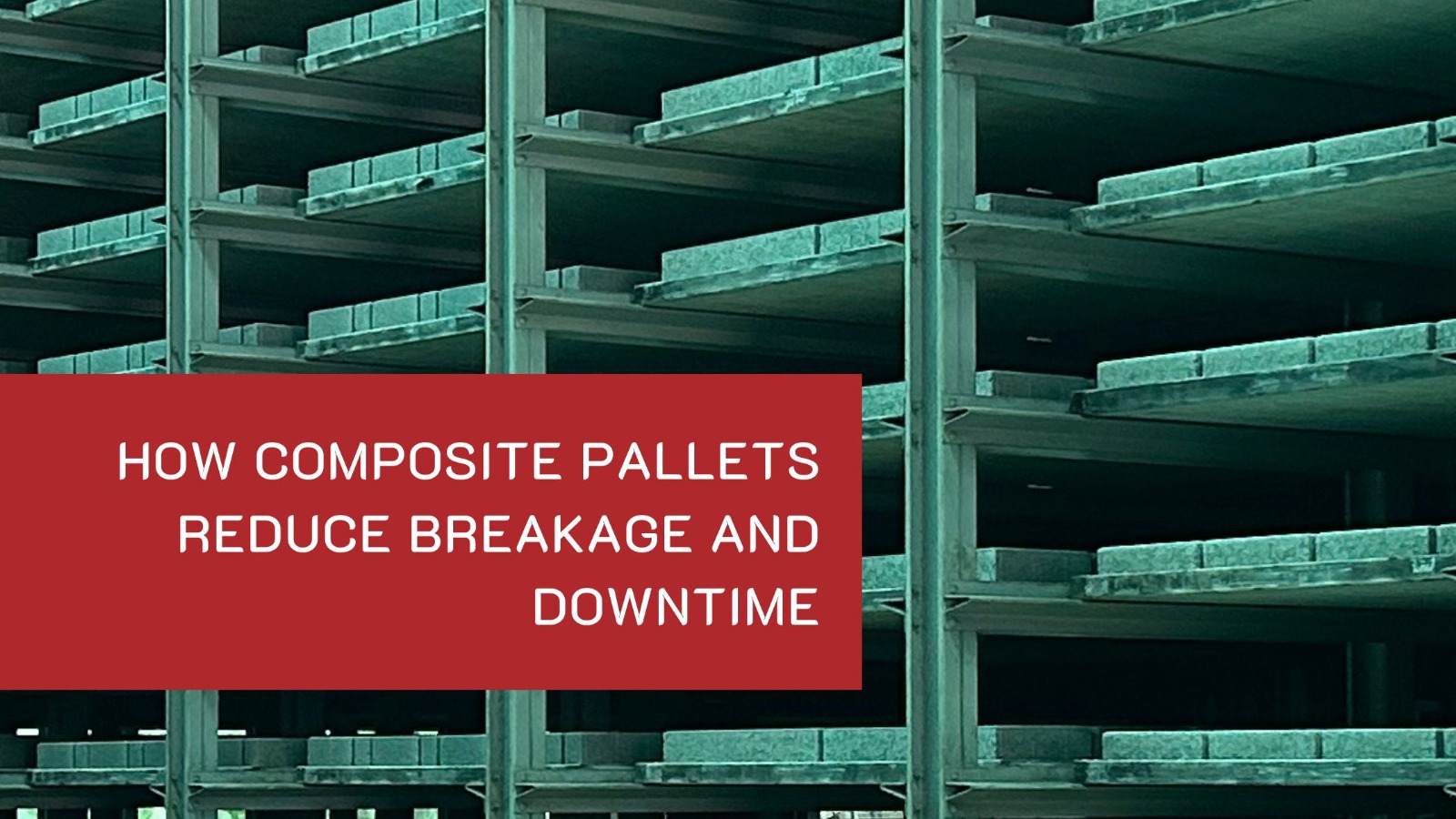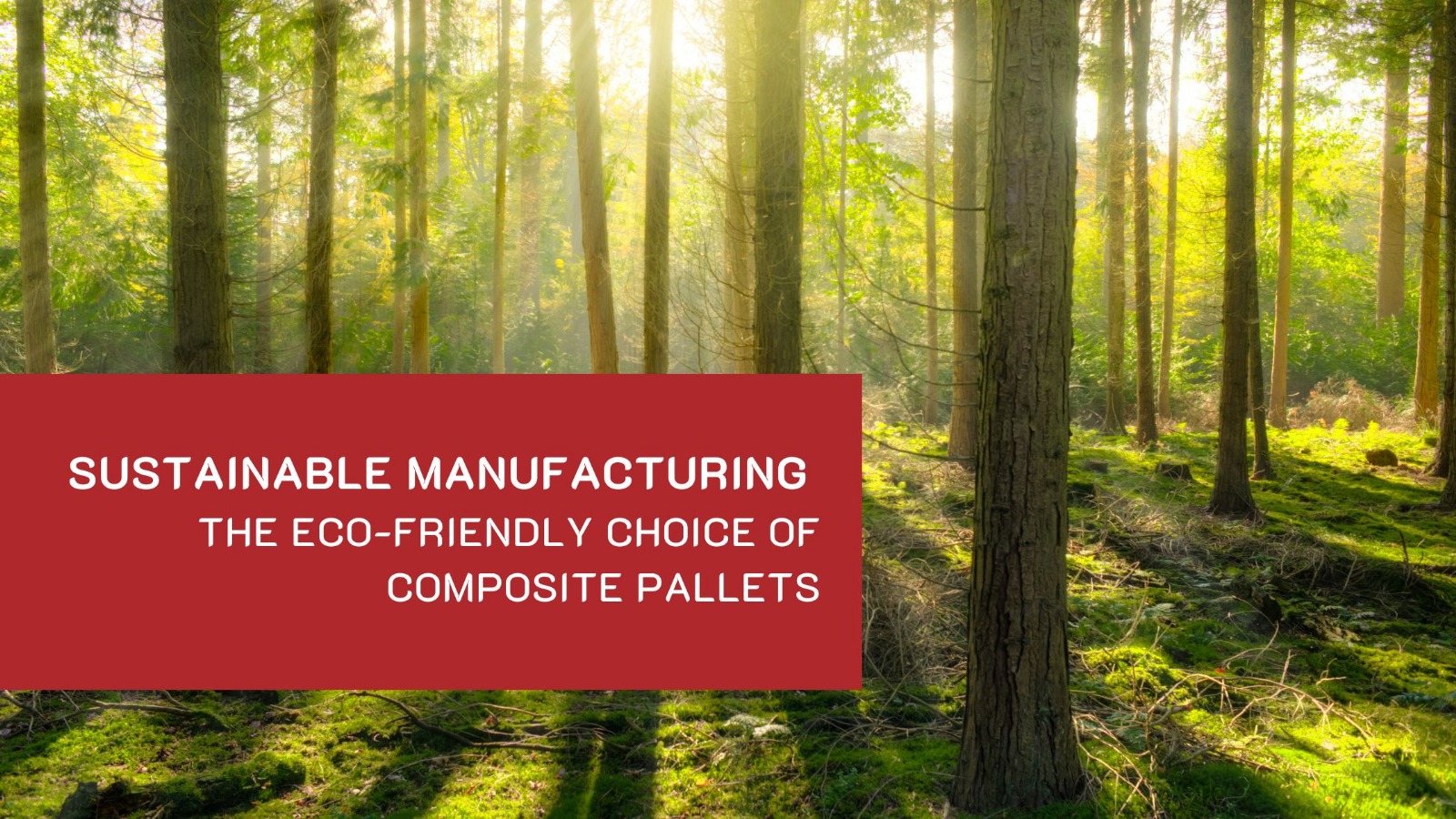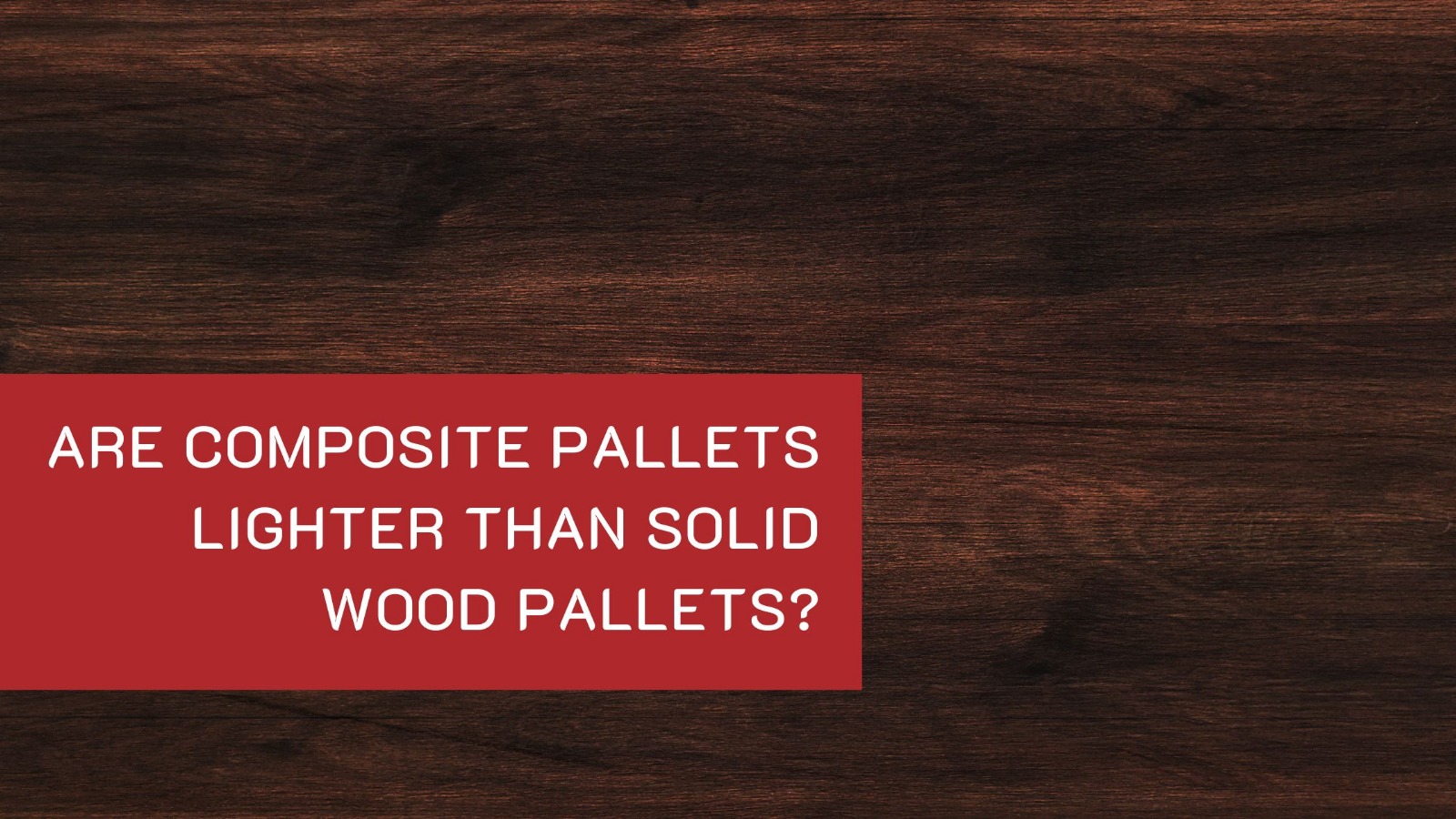Maximizing ROI: The Long-Term Benefits of Composite Pallets
Maximizing ROI: The Long-Term Benefits of Composite Pallets Home Maximizing ROI: The Long-Term Benefits of Composite Pallets Introduction When running a business that involves shipping, storage, or logistics, every dollar spent needs to make sense. That’s where ROI (Return on Investment) comes in—you want to make sure that whatever you invest in today brings long-term value, not just a quick fix. One of the biggest hidden costs in logistics? Pallets. They’re essential for transporting goods, but if they break easily or need frequent replacements, they can quietly eat into your budget. Traditional softwoodand plastic pallets often wear out faster, leading to higher costs over time. That’s where composite pallets come in. Built to last longer, handle more weight, and reduce overall maintenance costs, composite pallets are a smart investment for businesses looking to cut expenses and improve efficiency. Let’s dive into how they help maximize your ROI! What Are Composite Pallets? Composite pallets are the next generation of pallets—designed to be tougher, more durable, and cost-effective in the long run. Unlike traditional wooden or plastic pallets, composite pallets are made from a blend of advanced materials, including resins, fiberglass, and other reinforced composites. This combination gives them superior strength while keeping them lightweight. How Do They Compare to Wood and Plastic Pallets? Feature Wood Pallets Plastic Pallets Composite Pallets Durability Prone to breaking, splintering, and rotting Can crack under heavy loads Extremely strong, impact-resistant Lifespan Short—requires frequent replacements Longer than wood but can degrade Longest-lasting with minimal wear Moisture Resistance Absorbs water, can develop mold Water-resistant but may warp Fully resistant to moisture and chemicals Load Capacity Can handle heavy loads but weakens over time Strong but may deform under extreme weight High load-bearing capacity, built for tough conditions Maintenance Needs constant repairs or replacements Low maintenance but costly Almost maintenance-free Eco-Friendliness Often made from cut trees, short lifespan Recyclable but takes energy to produce Sustainable, lasts longer, and reduces waste Why Are Composite Pallets Gaining Popularity? Businesses across industries—automotive, pharmaceuticals, food and beverage, and heavy manufacturing—are making the switch to composite pallets. Why? Because they offer a long-term solution that reduces costs, improves efficiency, and ensures better safety in handling and transport. With stricter regulations on hygiene, sustainability, and load management, companies are realizing that traditional pallets just don’t cut it anymore. Composite pallets are the future of logistics, helping businesses save money while improving operations. Why Choose Rhino Composite Pallets? When it comes to strength, durability, and long-term cost savings, Rhino Composite Pallets stand out from the rest. Built with advanced composite materials, these pallets are designed to handle the toughest industrial conditions while offering a smarter, more sustainable alternative to traditional wood and plastic pallets. What Makes Rhino Composite Pallets Different? Unmatched Strength & Durability Rhino pallets are engineered to withstand heavy loads, rough handling, and extreme environments. Unlike wood that splinters or plastic that cracks, our pallets remain sturdy and reliable for years. Longer Lifespan = Higher ROI Frequent pallet replacements can silently drain your budget. With Rhino Composite Pallets, you invest once and save for years, reducing long-term costs and improving operational efficiency. Moisture, Chemical & Pest Resistance Say goodbye to mold, rot, and termite issues. Rhino pallets don’t absorb moisture, making them perfect for food, pharmaceutical, and chemical industries where hygiene is a priority. Lightweight Yet Heavy-Duty Our pallets are designed to be lighter than wood yet stronger than plastic, making them easier to handle while still supporting heavy loads without warping or breaking. Eco-Friendly & Sustainable Traditional pallets contribute to deforestation and waste. Rhino Composite Pallets are built to last longer, reducing overall waste and supporting a greener, more sustainable supply chain. Trusted Across Industries From automotive and manufacturing to pharmaceuticals and FMCG, Rhino Composite Pallets are the go-to choice for businesses that need tough, reliable, and cost-effective material handling solutions.
Read MoreWhy are Pallets Important for Brick Making Machines
Why are Pallets Important for Brick Making Machines Home Why are Pallets Important for Brick Making Machines Brick making machines are an essential part of the construction industry, responsible for producing the building blocks that form the backbone of modern infrastructure. These machines are used to create various types of construction products, from bricks and concrete blocks to tiles and pavers, and they operate by utilizing molds, hydraulic pressure, and other technologies. While the machinery and processes behind brick production are critical, there is one often-overlooked component that plays a crucial role in ensuring efficiency and quality: the pallet. In the world of concrete brick production, a pallet is a flat, typically wood, steel or plastic, rectangular board used to support and transport molded concrete products. These pallets are integral to the brick-making process, and their importance cannot be understated. In this blog, we’ll dive deep into why pallets are so essential for concrete brick making machines and how they contribute to the overall quality and efficiency of production. 1. Support for Concrete Products During Curing After concrete bricks or blocks are molded, they need to undergo a curing process to solidify and reach their full strength. Curing refers to the period during which the concrete is kept moist and at an optimal temperature to allow the chemical reactions necessary for its hardening to occur. Pallets serve as a stable surface on which the molded bricks are placed during this crucial phase. The proper support helps in maintaining the shape and integrity of the products, preventing warping, cracking, or other forms of damage that can occur when the concrete dries improperly. Pallets provide a flat, level surface that ensures uniform curing conditions for each brick or block, leading to consistently high-quality products. 2. Efficient Handling and Transportation Handling and transporting concrete products can be a challenge due to their weight and fragility before they are fully cured. Pallets offer an efficient and safe solution to this problem. By placing the molded concrete products on pallets, manufacturers can easily move them through various stages of production, from the molding area to the curing chamber and then to storage or shipping. Using pallets makes the entire process more streamlined. Forklifts or other equipment can lift and transport the entire pallet, making it easier to load and unload products without risking breakage or damaging individual bricks. Additionally, pallets allow for better organization and space utilization, reducing the risk of products getting mixed up or damaged while being moved around. 3. Improved Production Efficiency Production efficiency is a key factor for any manufacturing process, including the production of concrete bricks. The use of pallets in concrete brick making machines contributes significantly to improving overall efficiency. By standardizing the size and shape of the molds, pallets allow for a consistent and uniform production process. This means that fewer errors occur, reducing the likelihood of defective bricks and minimizing downtime caused by production issues. Additionally, using pallets allows for better stacking and organization of the molded products, ensuring that all bricks or blocks are kept in their proper place. This minimizes the risk of handling mistakes that could lead to delays or defects in the final product. In turn, these improvements in production efficiency can help reduce costs, increase throughput, and improve the profitability of a concrete brick-making operation. 4. Durability and Longevity of Products Concrete bricks or blocks are often exposed to harsh weather conditions during their transport and storage, making it essential to ensure that they are properly protected during these phases. Pallets provide a protective barrier, safeguarding the concrete products from potential damage caused by abrasion, rough handling, or environmental factors like moisture or dirt. The use of durable pallets also contributes to the longevity of the concrete products themselves. 5. Cost-Effectiveness While pallets represent an upfront investment, they are a cost-effective solution in the long run. Their durability ensures that they can withstand repeated use, allowing manufacturers to reuse them multiple times. Hardwoodpallets, in particular, can be refurbished if they become damaged, offering further cost savings. Plastic and steel pallets, although more expensive initially, are highly durable and require less maintenance. Furthermore, the improved production efficiency and reduced likelihood of product defects that come with using pallets help reduce costs by lowering the rate of wasted or damaged products. The reduction in breakage during handling and transportation also cuts down on potential costs related to lost inventory or the need for repairs and replacements. 6. Standardization and Compatibility Standardized pallets make it easier to integrate various components of the brick-making process, such as the concrete brick making machines, curing chambers, storage facilities, and transportation systems. A standard pallet size ensures that all the concrete products fit consistently onto the same pallet type, making it easier to automate processes and reduce labor costs. For instance, automatic brick-making machines often rely on precise measurements and mold sizes. When combined with standardized pallets, the entire system becomes more compatible and efficient. This uniformity allows workers or automated systems to handle the products seamlessly, reducing mistakes and improving the consistency of the final product. 7. Minimizing Contamination In concrete brick production, cleanliness is vital for ensuring that the bricks or blocks maintain their quality and integrity. Contamination from dirt, dust, or other materials during production can weaken the concrete, affecting the final product’s strength and appearance. Pallets help minimize contamination by providing a clean and controlled surface for the products to rest upon. Hardwoodpallets, for example, can be treated or coated to make them resistant to dust and moisture, ensuring that the concrete products stay clean during the entire production process. By maintaining a controlled environment for curing, handling, and transport, pallets reduce the risk of contamination and ensure that the concrete bricks remain of high quality. 8. Eco-Friendly and Sustainable Options With growing concerns about environmental sustainability, the concrete brick-making industry is increasingly looking for ways to reduce its ecological footprint. Pallets, especially those made from hardwood or recycled plastic, offer an eco-friendly option
Read MoreHow Composite Pallets Reduce Breakage and Downtime
How Composite Pallets Reduce Breakage and Downtime Home How Composite Pallets Reduce Breakage and Downtime Introduction For manufacturers, efficiency is everything. When equipment or materials fail, it leads to downtime, lost productivity, and increased costs. One of the biggest contributors to inefficiency in block manufacturing is pallet breakage. Traditional wooden and steel pallets often wear out quickly, leading to frequent replacements and production interruptions. This is where composite pallets step in to change the game. In this blog, we’ll explore how composite pallets, like Rhino Composite Pallets, significantly reduce breakage and downtime, ensuring smoother operations and higher productivity. Why Do Traditional Pallets Break? Before we get into the advantages of composite pallets, let’s look at the issues with conventional ones: 1. Wooden Pallets: Fragile and High-Maintenance Wooden pallets are prone to cracking, splintering, and warping. Exposure to moisture and humidity weakens their structure. They require frequent repairs or replacements, causing unnecessary downtime. 2. Steel Pallets: Strong but Problematic Steel pallets are durable but susceptible to rust and corrosion. They are heavy and difficult to handle, increasing labor costs. Over time, they may bend under high loads, reducing efficiency. These issues highlight the need for a more durable and long-lasting solution—composite pallets. How Composite Pallets Reduce Breakage 1. Superior Durability and Strength Composite pallets are engineered from high-quality polymer and fiber composites, making them extremely strong and impact-resistant. Unlike wood, they don’t splinter or crack under pressure, and unlike steel, they don’t rust or corrode. 2. Moisture and Chemical Resistance Moisture is a major cause of pallet degradation. Composite pallets are waterproof and resistant to chemicals, ensuring they maintain their structural integrity even in harsh conditions. 3. No Warping or Deformation Over time, wooden pallets warp due to temperature and moisture changes. Composite pallets remain dimensionally stable, providing a reliable surface for block manufacturing. 4. Withstands Heavy Loads Composite pallets are designed to handle heavy weights without bending or breaking. This makes them ideal for block manufacturing, where durability is crucial. How Composite Pallets Minimize Downtime 1. Reduced Replacement Frequency Since composite pallets last significantly longer than wood or steel, manufacturers don’t need to replace them as often. This minimizes interruptions in production. 2. Less Maintenance Required With traditional pallets, frequent maintenance is necessary to repair damage. Composite pallets require little to no maintenance, keeping the workflow uninterrupted. 3. Lightweight and Easy to Handle Unlike steel pallets, composite pallets are lightweight yet strong, making them easier to move and reducing labor efforts. This speeds up material handling and increases efficiency. 4. Consistent Quality for Automated Systems Many modern manufacturing plants use automated machinery for block production. Uneven or broken pallets can cause delays and errors in the automation process. Composite pallets ensure consistent quality, allowing smooth operation with minimal human intervention. Why Rhino Composite Pallets Are the Best Choice Rhino Composite Pallets take all these benefits to the next level. Their long lifespan, strength, and resistance to environmental factors make them an ideal choice for manufacturers looking to boost productivity. Key Benefits: Extremely durable and impact-resistant No warping, cracking, or rotting Lightweight for easy handling Water, chemical, and pest resistant Reduces overall downtime and increases efficiency Conclusion Pallet breakage and downtime are two major concerns in block manufacturing. By switching to composite pallets, manufacturers can significantly reduce operational disruptions, improve efficiency, and save costs in the long run. Rhino Composite Pallets provide a durable, reliable, and eco-friendly solution that ensures a smoother and more productive workflow. If you’re tired of dealing with frequent pallet failures and costly downtime, it’s time to switch to Rhino Composite Pallets. Get in touch today to learn how these advanced pallets can revolutionize your production process!
Read MoreSustainable Block Manufacturing: The Eco-Friendly Choice of Rhino Composite Pallets
Sustainable Manufacturing: The Eco-Friendly Choice of Composite Pallets Home Sustainable Block Manufacturing: The Eco-Friendly Choice of Rhino Composite Pallets Introduction Sustainability is the buzzword in almost every industry today, and the construction sector is no exception. With increasing environmental concerns, businesses are actively looking for eco-friendly solutions. One such innovation is Rhino Composite Pallets, which are revolutionizing the way concrete blocks are manufactured. These pallets offer a sustainable, durable, and cost-effective alternative to traditional wooden or steel pallets. In this blog, we’ll explore how Rhino Composite Pallets contribute to sustainable block manufacturing, their benefits, and why they’re the best choice for modern block-making businesses. The Problem with Traditional Pallets Before we get into the benefits of Rhino Composite Pallets, let’s first look at the issues with conventional options: 1. Wooden Pallets – Not So Green Wooden pallets are widely used, but they come at a cost – deforestation. They are susceptible to moisture damage, warping, and breakage, leading to frequent replacements. Over time, the continuous need for replacements increases waste and environmental impact. 2. Steel Pallets – Durable but Expensive Steel pallets are strong but prone to rusting, especially in humid conditions. They are heavy, making them difficult to transport and handle. The manufacturing process of steel involves high energy consumption and carbon emissions. With these challenges, manufacturers need a sustainable and long-lasting alternative—enter Rhino Composite Pallets! What Are Rhino Composite Pallets? Rhino Composite Pallets are engineered from a blend of composite materials, offering superior durability, strength, and eco-friendliness. Unlike traditional pallets, these are designed to withstand the demanding environment of block manufacturing while also promoting sustainability. Key Features: 100% recyclable materials Water-resistant and warp-proof High impact resistance Lightweight yet extremely strong Longer lifespan compared to wood and steel pallets Now, let’s break down how these pallets contribute to sustainable block manufacturing. How Rhino Composite Pallets Support Sustainable Block Manufacturing 1. Eco-Friendly and Refurbishable Rhino Composite Pallets are made from sustainable materials that can be recycled at the end of their lifespan. Unlike wood, they don’t contribute to deforestation, making them a green choice for manufacturers. 2. Reduced Waste and Longer Lifespan Wooden pallets often break, warp, or rot, leading to frequent replacements. Rhino Composite Pallets, on the other hand, last much longer, significantly reducing waste and the need for continuous production of new pallets. 3. Energy Efficiency in Manufacturing The production of composite pallets has a lower carbon footprint compared to steel pallets, which require extensive mining and processing. Using Rhino Composite Pallets helps companies reduce their overall environmental impact. 4. Improved Durability Reduces Resource Consumption Durable pallets mean fewer replacements, which translates to lower demand for raw materials. This directly contributes to conserving resources and minimizing industrial waste. 5. Resistant to Moisture, Chemicals, and Pests Unlike wood, which is prone to termite attacks and rotting, Rhino Composite Pallets are resistant to moisture, chemicals, and pests. This eliminates the need for chemical treatments that could be harmful to the environment. 6. Lightweight and Easy to Handle Being lighter than steel pallets, these composite pallets make transportation easier and reduce fuel consumption in logistics. Less fuel consumption equals fewer carbon emissions, making your business greener. Why Rhino Composite Pallets Are the Best Choice for Block Manufacturers With sustainability becoming a key priority, businesses need to make smart choices. Rhino Composite Pallets provide a perfect blend of durability, eco-friendliness, and cost-effectiveness. Here’s why they stand out: 1. Cost-Effective in the Long Run While the initial investment in composite pallets may be slightly higher than wood, their longer lifespan ensures a lower cost per use. You save money on replacements and maintenance. 2. Enhances Production Efficiency Since Rhino Composite Pallets don’t warp or crack, they provide a consistent surface for block manufacturing. This leads to uniform blocks, better stacking, and efficient production. 3. Improves Workplace Safety No splinters, no rust, no warping – Rhino Composite Pallets make handling safer for workers. Their lightweight nature also reduces the risk of injuries. 4. Reduces Carbon Footprint Switching to sustainable materials like composite pallets helps companies meet their environmental goals and align with global green initiatives. Sustainability Beyond Pallets: Eco-Friendly Block Manufacturing Using Rhino Composite Pallets is just one step toward sustainable block manufacturing. Here are other ways manufacturers can adopt eco-friendly practices: 1. Using Green Cement Opting for low-carbon cement alternatives reduces emissions and minimizes environmental impact. 2. Recycling Waste Materials Incorporating fly ash, slag, and recycled concrete into block production helps reduce waste and conserve raw materials. 3. Energy-Efficient Machinery Using energy-efficient block-making machines can significantly cut down electricity consumption. 4. Water Conservation Recycling and reusing water in the block-making process helps conserve this precious resource. Final Thoughts The world is moving toward sustainability, and block manufacturers must follow suit. Choosing Rhino Composite Pallets is a smart, eco-friendly decision that benefits both businesses and the environment. These pallets offer superior durability, cost savings, and reduced environmental impact, making them the perfect alternative to traditional options. So, if you’re in the block-making industry and looking to go green, it’s time to switch to Rhino Composite Pallets!
Read MoreAre Composite Pallets Heavier or Lighter Than Solid Wood Pallets?
Are Composite Pallets Heavier or Lighter Than Solid Wood Pallets? Home Are Composite Pallets Heavier or Lighter Than Solid Wood Pallets? When choosing pallets for your business, weight is a crucial factor. Heavier pallets can drive up shipping costs, while lighter ones might not offer the durability you need. That’s where composite pallets come in. But are they heavier or lighter than traditional solid wood pallets? Let’s break it down in a simple, no-nonsense way. What Are Composite Pallets? Composite pallets are made from engineered materials, usually a mix of recycled plastics, resins, and wood fibers. Unlike solid wood pallets, which are carved from natural timber, composite pallets are designed for strength, durability, and sustainability. Brands like Rhino Composite Pallets have perfected this blend, offering a sturdy yet lightweight alternative to conventional wooden pallets. Weight Comparison: Composite vs. Solid Wood Pallets The weight of a pallet depends on its size, material, and design. Here’s a general comparison: Solid wood pallets typically weigh between 15-30 kg, depending on the type of wood used. Composite pallets, like those from Rhino Composite Pallets, usually weigh 20-25% less than their wooden counterparts. That means if you’re using a 25 kg wooden pallet, a similar composite pallet would weigh around 18-20 kg—a significant reduction that can impact your logistics costs. Why Does Weight Matter? Weight isn’t just about easy handling—it directly affects your shipping expenses. Here’s how a lighter pallet benefits your business: Lower transportation costs: Heavier pallets mean higher fuel consumption and increased freight charges. Better load optimization: Since composite pallets weigh less, you can load more goods while staying within weight limits. Easier manual handling: Workers find lighter pallets easier to move, reducing the risk of injuries. Durability and Strength: Does Weight Reduction Compromise Quality? Not at all! Composite pallets are engineered for strength. Despite being lighter, they often outperform wooden pallets in terms of: Load capacity: Composite pallets can handle the same, if not more, weight than solid wood pallets. Impact resistance: They’re designed to withstand rough handling without splintering. Moisture and pest resistance: Unlike wooden pallets, composite pallets don’t absorb moisture or attract termites. Rhino Composite Pallets, for example, are built to last without the wear and tear that wooden pallets face over time. Sustainability: The Eco-Friendly Choice Switching to composite pallets isn’t just about weight—it’s also about sustainability. Solid wood pallets contribute to deforestation, whereas composite pallets are often made from recycled materials, reducing waste. Rhino Composite Pallets prioritizes eco-friendly solutions, making them a greener choice for businesses looking to reduce their carbon footprint. Cost Factor: Are Composite Pallets More Expensive? Initially, composite pallets may cost more than traditional wood pallets. However, their durability and longer lifespan mean fewer replacements, making them a cost-effective investment in the long run. Plus, with lower shipping costs due to their lighter weight, you save money over time. Conclusion: Which Pallet Should You Choose? If your business prioritizes cost savings, durability, and sustainability, composite pallets are the clear winner. Rhino Composite Pallets offer a lightweight yet strong alternative to solid wood pallets, making them ideal for businesses looking to optimize logistics and reduce expenses. So, next time you’re debating between solid wood and composite pallets, consider this: Would you rather pay more for heavier shipments and frequent replacements, or invest in a durable, eco-friendly, and cost-saving solution? The choice is yours!
Read More +614 2193 1745
+614 2193 1745